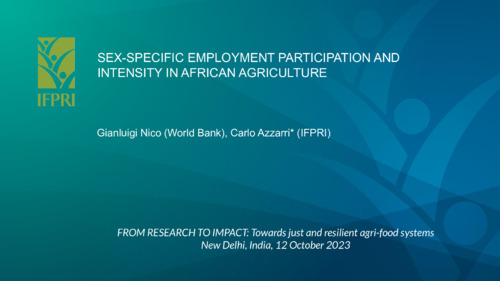Sex-specific employment participation and intensity in African agriculture
Abstract
An estimated 224 million people 15 years old and above are directly engaged in agriculture in Africa, corresponding to nearly half of the total employed population in the continent. Women play a crucial role in African agriculture, representing 45% of total agricultural employment. However, their role still appears to be limited to subsistence production, and their work intensity in productive agricultural activities is much lower compared to men, leading to the risk of cementing, or even increasing, preexisting gender inequalities. Understanding gender inequality in intensity of participation in agricultural employment and, in turn, in agricultural livelihoods, remains largely an empirical question. Using a multivariate econometric framework, the objective of this paper is to identify and quantify sex-specific drivers of gender inequality in agricultural employment. We use a novel individuallevel dataset—mostly drawn on LFS—comprising 31 countries, representing 80% of all African population, fitting a double-hurdle model to jointly estimate labor participation and time intensity in agriculture, to quantify sex-specific factors that prevent women from engaging in agriculture or reduce their work intensity due to gendered time-competing demands. We find strong evidence of a sex-specific effect in case of caretaking responsibilities: overall, for one additional nonworking dependent within the household, the intensity of work in agricultural employment increases by almost one hour per week, although it decreases by more than seven hours for women compared to men. Implications of our results call for policy action to render caretaking services more affordable to increase work participation and intensity especially among female farmers.

